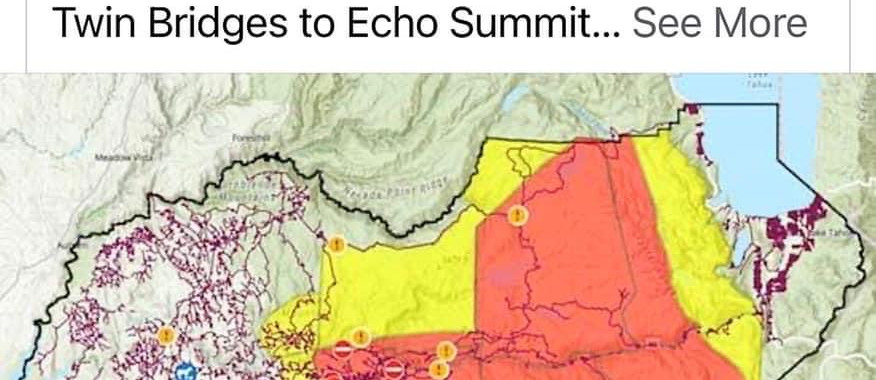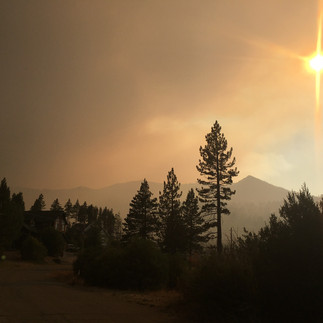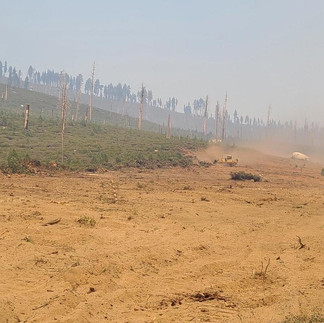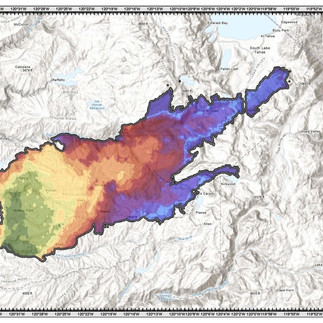Tahoe Is No More - VHRs, Remote Workers, and Fires Are A Threat To Mountain Men, Women And Children
- tahoeadventuretrex
- Sep 28, 2021
- 7 min read

There was a time not too long ago when the lands around Lake Tahoe were a mystery to most. European settlers seemed to miss our beautiful alpine lake on their journey out west. Only the local Native American populations were the few Summer inhabitants around Lake Tahoe. In the Winter, Lake Tahoe was mostly blessed with the peace and quiet of Mother Nature. However, that peace and quiet could only last for so long. Eventually, Lake Tahoe would be famous the world over. Yet, even now, Lake Tahoe’s popularity may be leading to it’s own demise.
The first non-Native American to witness the beauty of Lake Tahoe occurred only 177 years ago. John C. Fremont first laid eyes on Lake Tahoe Valentine’s Day 1844. He was looking for a better path towards Sacramento and spotted “Mountain Lake” from a vantage point near Carson Pass, atop Red Lake Peak. At this point, Lake Tahoe was now open for the American westward expansion. Who could imagine what would become of Lake Tahoe’s tourist industry in the years to c

Lake Tahoe’s first celebrated tour guide could easily be Mark Twain. Some have even said that Mark Twain was figuratively born from Lake Tahoe. Up until his adventures in Lake Tahoe, he was known as Samuel Clemens. But, during the Comstock Era, Mark Twain became one of the early voices promoting Lake Tahoe with his embellished tales of beautiful scenery and magical landscapes. As he once wrote, "The air up there in the clouds is very pure and fine, bracing and delicious. And why shouldn't it be?--it is the same the angels breathe.". Little did he realize what would happen to Lake Tahoe in the years to come.
In all reality, Lake Tahoe's tourism would really have to wait for a global event nearly 100 years following Mark Twain's promotion of Lake Tahoe. The 1960 Winter Olympics attracted people from all over the world to Lake Tahoe and the surrounding communities. Ironically, the surrounding communities had very little to support such a global endeavor. But, like the early pioneers during westward expansion, these early settlers would make something special out of almost nothing.

Lake Tahoe can thank Wayne Poulsen and Alexander Cushing for selling the idea to the world. The fledgling resort, Squaw Valley, was little more than one ski lift, two rope tows, and a 50 room lodge. However, television and local government contributions helped make their sell a viable option. CBS purchased the rights to broadcast the 1960 Summer Olympics for $550,000. During the Games, CBS broadcast 15 and a quarter hours of television focusing on ice hockey, speed skating, figure skating, alpine skiing and ski jumping. Due to cost constraints, the organizers did not construct the usual bobsled facility. The impact of television was felt during the Games; in the men's slalom event, officials who were unsure if a skier had missed a gate asked CBS if they could review tape of the event. This request gave CBS the idea for what is now known as instant replay. So, as an EVS Operator (replay), I guess I should be extremely grateful for Lake Tahoe's contributions to more than just beautiful scenery.
More recently, the development and population surges in and around Lake Tahoe, have been associated with what will forever be known as COVID 19. The global pandemic associated with COVID 19 created distance learning for kiddos and the possibility of working remotely for many employees. This surge sent many people packing from the high density population centers around Silicon Valley and headed into the areas surrounding Lake Tahoe.

Although Lake Tahoe has historically relied upon Bay Area visitors for their tourist dollars, most residents will argue that the money is received with a grain of salt. With all of those tourist dollars comes disrespectful behavior, trashed natural areas, jammed thoroughfare arteries in and around town, as well as excessive noise complaints at areas well outside of the tourist corridors. During COVID, Lake Tahoe saw visitors shrug off the recommended travel mandates to head for the hills. Personally, I encountered many guests that chose to "shelter in place" within our mountain community. Then, they would act surprised discovering that our small town only had eight (8) ICU beds available at Barton Memorial Hospital. Talk about adding stress to an already stressful situation. But, Lake Tahoe quietly embraced these tourist dollars and handled things as effectively as they could, so as not to scare off any life-saving potential revenue for the community.
Lately, there's been another casualty due to COVID, and that really has to do with the housing crunch. Housing crunches are not new to resort towns. Many communities dependent upon tourist dollars have seen homes purchased by outside parties for visiting vacationers. Many of those residences are historically only filled for possibly one week in the winter and a week or more in the summer. The rest of the time, those residences remained empty...until the recent rise of AirBnB, VRBO, and other VHRs.
Now, our usually quiet neighborhoods are filled with outsiders on a more permanent basis. These are the new "locals" that have made the choice to bail on city life and make country living a reality all around Lake Tahoe. Who could blame them, the current locals, the habitual seasonal transients, the born into residents, or any other mountain town demographic that lives the mountain lifestyle, loves the natural beauty, and learns to deal with a constant influx of visitors from out of town? Yet, these new locals have one major advantage. They don't NEED the tourist dollars. But, they NEED the workforce, if they want to see their community survive.
We have seen major employment opportunities go vacant, due to our housing crisis. Our most recent South Tahoe High School football coach decided to leave, based on housing. We've seen well-paying government jobs go vacant or even turned down, due to housing. And, we're also witnessing our local workforce dwindle, due to rising housing costs.

Lake Tahoe has quite the conundrum. Should our community let the second home owners and new "work from home" residents drive the local workforce (restaurants, grocery stores, automotive/boat mechanics, landscaping, retail shops, hair salons, police/fire/public utilities, healthcare, hospitality, tourism, and other government jobs) off the hill? Or, can our community find a way to provide affordable housing or possibly attract a commuter workforce from quality satellite communities outside the basin? Each of theses options depends upon more desirable wages and added benefits for some of our basic "entry level" positions?

































































Comments